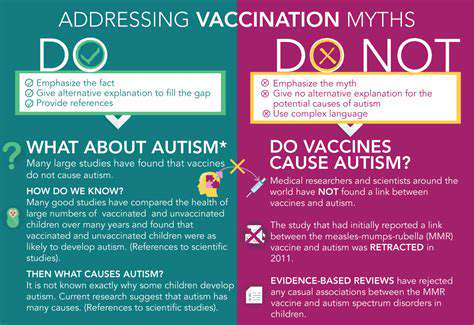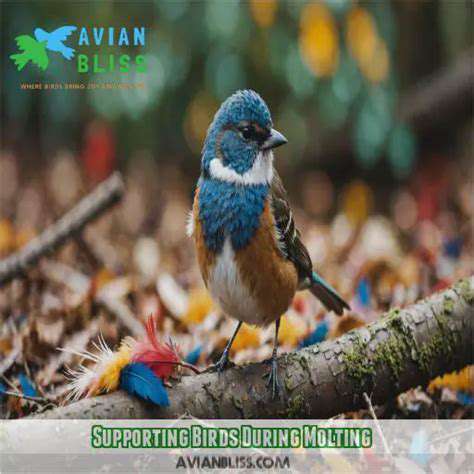Guide to Fall Pet Care [Hazards]
Cold Weather Dangers
As temperatures drop, pets can be vulnerable to hypothermia, especially those with short coats or thin fur. Shivering, lethargy, and pale gums are all symptoms to watch out for. Providing a warm, dry shelter and ensuring they have access to adequate food and water is crucial. Consider a pet-safe heating pad for vulnerable animals, but always supervise to prevent burns. Bringing pets inside for the coldest nights is often the best solution, but make sure that they have a safe and comfortable indoor space.
Frostbite is another concern, particularly on exposed areas like paws and ears. Walking pets on salted or icy surfaces can lead to painful frostbite. Be mindful of the cold and adjust your outdoor activities accordingly. If you notice any discoloration or unusual swelling on your pet's extremities, seek veterinary attention immediately. Prevention is key, so be sure to limit outdoor time during extreme cold spells.
Fall Foliage and Toxins
The vibrant colors of autumn are beautiful, but some fall foliage can be toxic to pets. Certain types of mushrooms, leaves, and berries can cause severe gastrointestinal upset, liver damage, or even neurological issues. Keep your pets away from areas with unknown plants, and if you suspect ingestion of a potentially harmful plant, contact your veterinarian immediately.
Be particularly cautious about acorns and oak leaves. While not always immediately toxic, the tannins and other compounds in these can cause gastrointestinal upset. Always supervise your pets closely when outdoors, especially in areas with fallen leaves and berries. Familiarize yourself with common toxic plants in your region and take preventative measures.
Wildlife Encounters
Autumn is a time of migration and increased wildlife activity. This can lead to encounters with foxes, raccoons, squirrels, and other animals that could pose a threat to your pet. Be aware of your surroundings and keep your pet on a leash in areas where wildlife is prevalent. Ensure your yard is secure and free of food scraps that might attract unwanted visitors, reducing the likelihood of encounters.
If your pet does encounter a wild animal, try to remain calm and avoid sudden movements. If the encounter escalates, seek help immediately. Consider using a pet deterrent spray or other safety measures to help prevent these situations.
Changes in Routine and Exercise
The transition to fall often means changes in daily routines. Many pet owners find themselves adjusting their exercise schedules, and this can lead to a variety of health issues. If you're reducing outdoor activity, ensure your pet is still getting enough exercise indoors. Consider interactive toys, puzzle feeders, or even indoor play sessions to keep your pet entertained and active.
Be mindful of the changing light conditions. Adjust your walking times to avoid walking in low light conditions. This can help prevent accidents and keep your pet safe. A consistent schedule is important for pet well-being, even in the fall.
Food Safety and Fall Treats

Food Safety During the Fall Harvest
Fall brings a bounty of delicious seasonal fruits and vegetables, but it also presents unique food safety challenges. Proper handling and storage are crucial to prevent spoilage and foodborne illnesses. Washing produce thoroughly before eating is essential, especially when preparing for pies, jams, and other fall treats. Using sanitized cutting boards and utensils during preparation is equally critical. Improper handling can lead to the growth of harmful bacteria, which can cause sickness.
Fall's abundance of pumpkins, apples, and gourds also requires careful consideration. These items can quickly spoil if not stored correctly. Refrigerating perishable ingredients like pumpkin puree and apple cider immediately after harvest is key to maintaining their quality and safety. Properly storing these seasonal favorites will prevent the growth of bacteria and ensure they are safe for consumption.
Fall Treats and Preserving
Preserving seasonal fruits and vegetables for later enjoyment is a popular fall activity. However, improperly preserved foods can harbor harmful bacteria. Following safe canning procedures is vital to prevent foodborne illnesses. This includes using appropriate temperatures and sterilizing jars thoroughly. Improper canning techniques can lead to serious health consequences. Therefore, careful attention to detail and adherence to established guidelines are essential.
Fall offers a wide range of tempting treats like pies, jams, and candies. When preparing these delicious fall treats, ensure that all ingredients are fresh and handled safely. Using high-quality ingredients and following detailed recipes is important to maximize the flavor and safety of your culinary creations. Careful attention to detail and adherence to food safety guidelines is essential to ensure that these treats are not only delicious but also safe for consumption.
Seasonal Storage for Fall Foods
Fall's abundance of seasonal produce often leads to large quantities of fruits and vegetables. Effective storage is key to preventing spoilage and maintaining the quality of these items. Storing fruits and vegetables at the proper temperature, often in the refrigerator, is crucial. Proper storage helps maintain freshness and prevents the growth of harmful bacteria.
Properly storing fall produce will not only extend its shelf life but also ensure that it remains safe to consume. Storing pumpkins, squash, and other root vegetables in a cool, dry place helps maintain their quality. Understanding the specific storage requirements for different types of fall produce is important for maintaining their freshness and preventing spoilage.
Preventing Parasites and Maintaining Hygiene

Preventing Parasite Infestations
Preventing parasite infestations requires a multifaceted approach, encompassing both environmental control and personal hygiene practices. Proper sanitation is paramount in eliminating breeding grounds for parasites. This includes regularly cleaning and disinfecting areas where pets or humans spend time, particularly areas like bedding, food bowls, and litter boxes. Proper waste disposal is also crucial to prevent the spread of parasites to other animals and humans.
Regular veterinary check-ups are essential for early detection and treatment of parasites in pets. Parasite prevention medications, available from veterinarians, can significantly reduce the risk of infestations. These medications should be administered according to the veterinarian's instructions and tailored to the specific needs of your pet. Consistent preventative measures can greatly reduce the chance of parasite infestations.
Maintaining a Healthy Environment
A clean and hygienic environment is crucial in preventing parasites. Regularly cleaning and disinfecting areas where pets or humans spend time, particularly areas like bedding, food bowls, and litter boxes, is essential. This practice helps eliminate potential breeding grounds for parasites and prevents the spread of infestations.
Proper waste disposal is another vital aspect. Dispose of animal waste promptly and in designated areas to prevent the contamination of soil and water sources, which can lead to the spread of parasites. Waste management plays a critical role in maintaining a healthy and parasite-free environment.
Personal Hygiene Practices
Maintaining good personal hygiene is critical for preventing the transmission of parasites. Washing hands thoroughly with soap and water after contact with pets, especially after handling their waste or interacting with their environment, can significantly reduce the risk of exposure to parasites. This is a fundamental step in personal hygiene that should be followed diligently.
Regularly cleaning and disinfecting surfaces in your home that may come into contact with parasites is also important. This includes high-touch surfaces like doorknobs, countertops, and light switches. Regular cleaning and disinfection can significantly reduce the risk of exposure to parasites, particularly for those with children or pets.
Veterinary Care for Pets
Regular veterinary check-ups for pets are crucial for early detection and treatment of parasites. Veterinarians can identify signs of infestation and recommend appropriate preventative measures and treatments. Early intervention is key to effective parasite management and prevention.
Pest Control in the Home
Controlling pests in and around your home can also help prevent parasite infestations. Pests can carry parasites, and their presence in the home can create an environment conducive to parasite proliferation. Implementing pest control measures, such as regular inspections and treatment of areas where pests are likely to congregate, can greatly reduce the risk of infestation.
Addressing potential pest entry points can further decrease the chances of parasites entering your home. This includes sealing cracks and crevices, ensuring screens are in good repair, and storing food properly to discourage pest attraction.
Read more about Guide to Fall Pet Care [Hazards]
Hot Recommendations
- Review: [Specific Brand] Small Animal Cage
- Why Rescuing Pets Saves Lives
- Best Pet First Aid Kits [What to Include]
- How to Help Stray Animals in Your Community
- Guide to Adopting a Pet When You Have Kids
- Top Reptile Heat Lamps
- Heartwarming Rescue Stories That Will Inspire You
- Review: [Specific Brand] Bird Cage
- Best Aquarium Filters [2025 Review]
- Review: [Specific Brand] Smart Litter Box






![Guide to Summer Pet Care [Tips for Heat]](/static/images/33/2025-06/CreatingaCoolIndoorEnvironment3AKeepingCoolIndoors.jpg)




